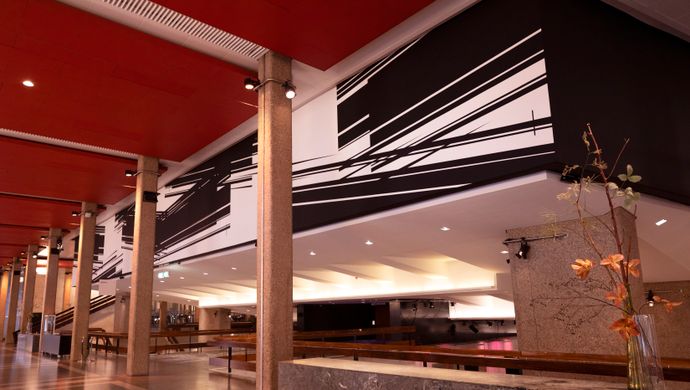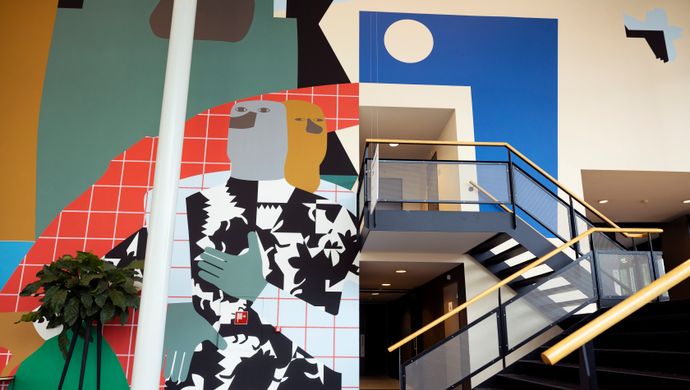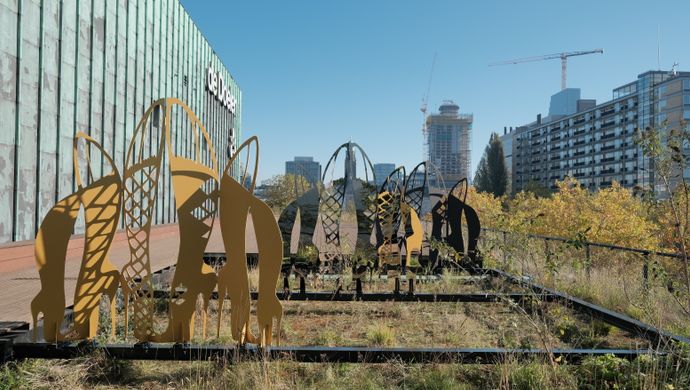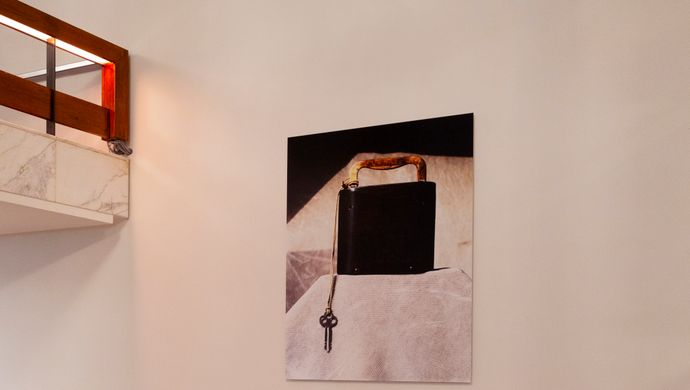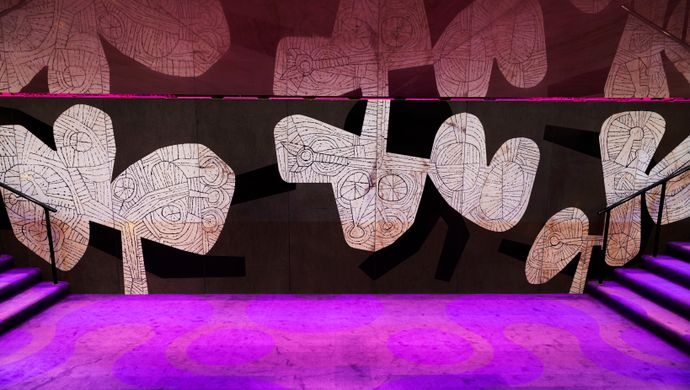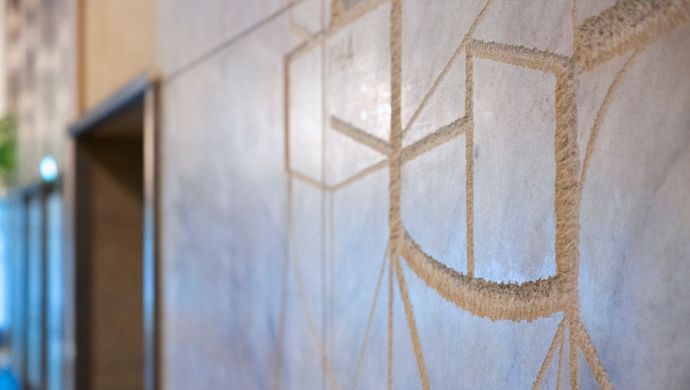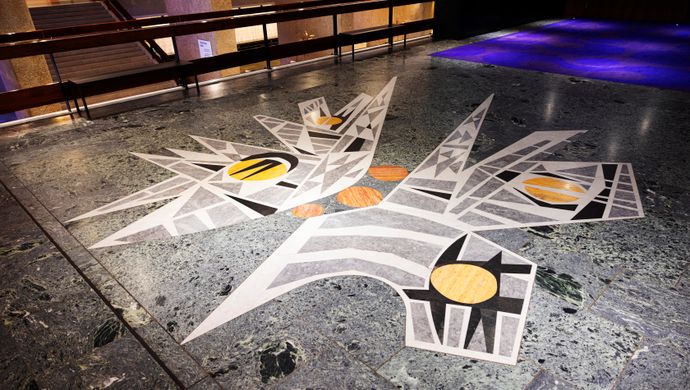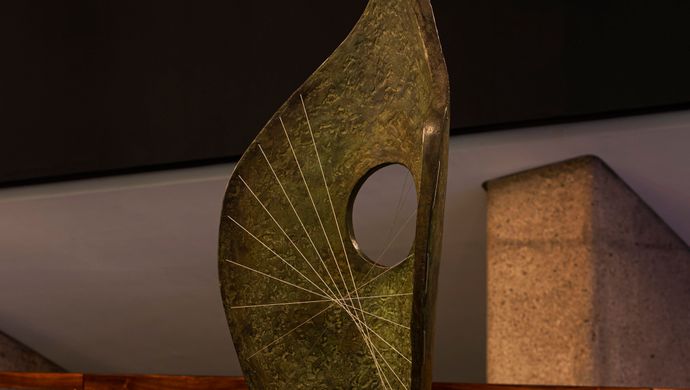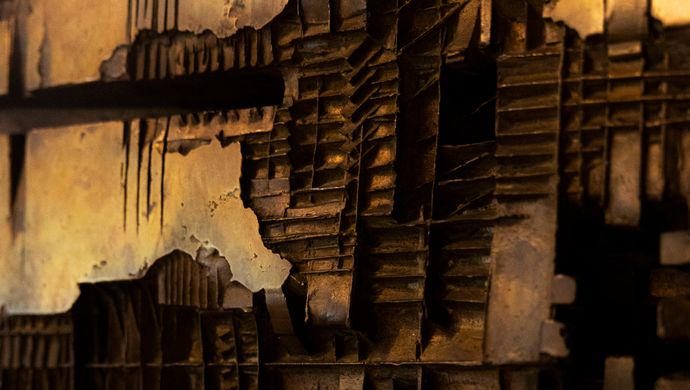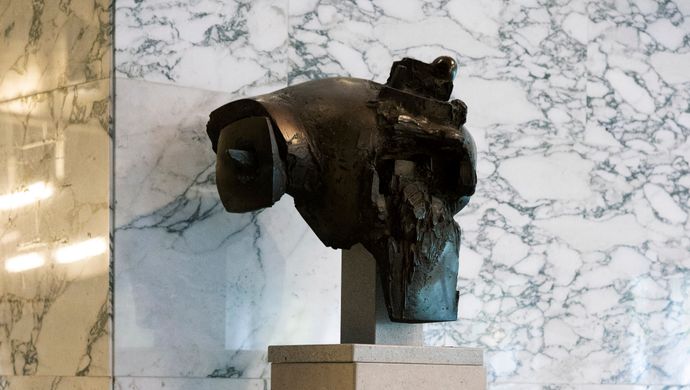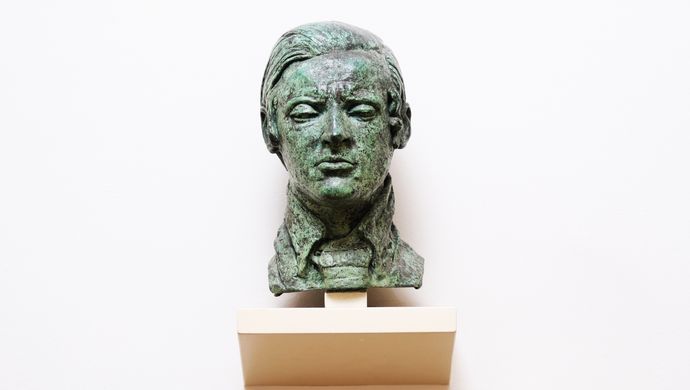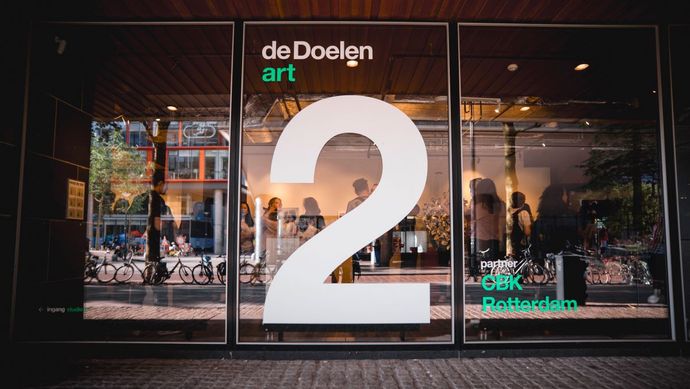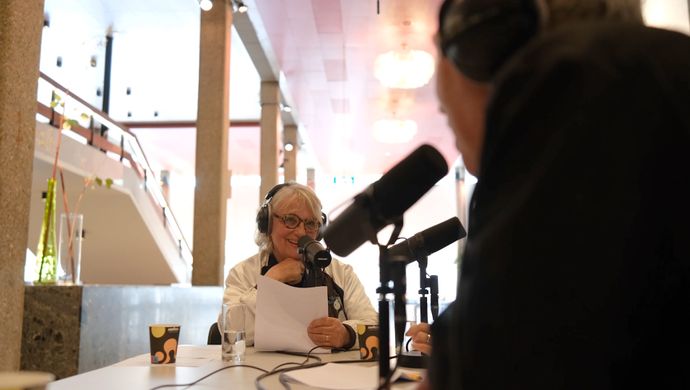the art collection

our collection
more information
1% regulation
As the mid-60s graced Rotterdam’s de Doelen with its presence, the 1% settlement rule was in full swing. A regulation decreeing that 1% of the budget for new construction, renovations, or purchases of national buildings would be dedicated to art. This saw the likes of Elenbaas, Arnaldo Pomodoro, Bouke Ylstra,
Frank Nix, Wil Fruytier, and Kees Franse receiving commissions, from Kraaivanger architects, to enhance the new concert hall with their works. Even the wonderful rooftop foyer called Dakfoyer designed by Carel Wirtz
and Jan Wijsbroek, now reserved for special events, fell under this rule.
business community
In addition, the corporate world was not to be outdone when it came to enhancing the new concert hall with art. The aforementioned Wally Elenbaas was commissioned for his intarsia by the Rotterdamse Marmer Industrie (RMI), who supplied more than 20 varieties of marble for the building. The Koninklijke Verenigde Tapijtfabrieken (KVT), tasked with a monumental project at de Doelen, financed the breathtaking tapestry ‘Orchestral Motifs’ by artist Lex Horn.
time for off
While some museums grapple with the traditional presentation of artworks, seeking new avenues of display, de Doelen seems to have been decades ahead of its time. Visitors stumble upon these artworks by chance; they
stand, hang, and even lie scattered across the various spaces. The combination of music and visual art renders the place truly one-of-a-kind. Yet, there’s an occasional pitfall to this casual approach, as visitors might not always grasp the history behind these works or know where to find them. And so we invite you to our Art Walks along the art collection of one of the most beautiful concert halls in Europe.


